FREE MÜHLGANG unburies the traces of the past to reveal through a process of erosion the stories, events, and people(s) that have been forgotten, excluded, and silenced. The history of Graz is closely tied to the Mühlgang: an artificial canal that was an essential urban infrastructure and has now become an othered space, encaged and out of reach. Our proposal liberates the Mühlgang, recovering it for the city and its citizens through an inclusive public green-blue corridor that links the existing parks—Volksgarten and Oeverseepark—with our site, turning what are now two isolated intermezzos along an otherwise inaudible, untouchable, and invisible waterway, into an immersive detour along the Mühlgang.
In view of the many voices that consider the canal obsolete and demand its draining, our approach proposes its resignification into a space for experimentation and a connecting organism between past, present, and future. Within the project site the Mühlgang is freed, overflowing a generated topography and shaping an artificial wetland: WATEREVER. Waterever revisits the thermae as a space to socialize around water, becoming a playful and exciting scenery that aims to congregate the different realities that coexist in the Gries district. The new wetland will filter the Mühlgang waters, keeping the waterway and its associated landscapes fresh and clean in order to welcome and support its own human and wild lives that will change with the seasons. The unchained Mühlgang will allow neighbors to recover the forgotten experiences that existed throughout its history, reminding people of swimming in the canal, gathering in pleasant public spaces or nurturing their own garden.
As Waterever approaches the main street—Karlauerstraße—an elevated permeable building with a green facade extends the landscape upwards: the HINGE. The Hinge creates a unique Gateway to the once iconic now outdated CityPark—the city´s first ever shopping mall—connecting it with the proposed green and blue detour along the Mühlgang. Throughout the building, an alternative program to City Park´s consumerism is displayed, enhancing environmental awareness through alternative models of consumption, gender equality, and LGBTQIA+ Identity development.
The resulting landscape, materialized through the Hinge and Waterever, becomes a statement for inclusive architectures that engage a wide range of actants to inhabit, transform and enhance a new vision for the city of Graz and its neighborhoods.
The essence of FREE MÜHLGANG lies in a social program generated by its own context. The history of Graz, through its relationship with water, reminds us that the present is an ever changing palimpsest, the result of a superimposition of multiple layers of information—some of them eroded, forgotten and invisibilized. The proposal becomes a model to visualize themes of the contemporary city that, having previously been considered peripheral, are now slowly making their way.
FREE MÜHLGANG will gradually sediment with the passage of time. Like the course of a river, different meanders will appear as the project gradually adapts to new consumer policies, to its new human and non-human inhabitants, to the new and changing urban and wild lives that it hosts, to the drift of society and to climate change. In doing so, the project seeks to continue and augment the historically participatory trajectory of Graz, giving a leading role to minority groups that may have been previously excluded.
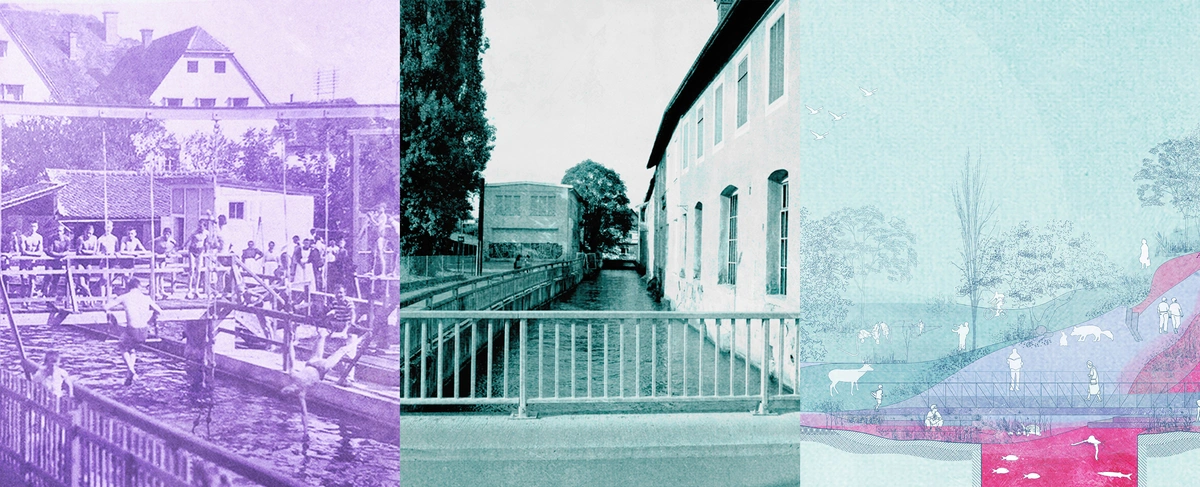
The Mühlgang experienced, encaged and freed. In Waterever the unchained Mühlgang will allow Graz inhabitants to recover the forgotten experiences and relationships that existed throughout its history, turning the once obsolete canal into a vibrant bridge between past, present and future. The new wetland will remind people of swimming in the canal, gathering in pleasant public spaces or nurturing their own garden, while filtering the existing waterway to produce clean water and rich vegetation.
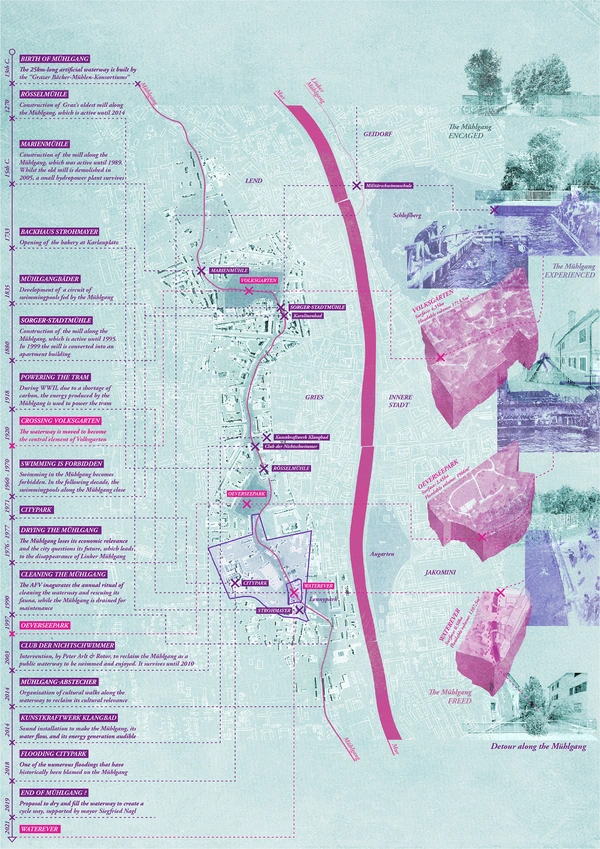
Detour along the Mühlgang: unearthing the histories of the canal. Free Mühlgang recovers the Mühlgang as a social and political engine. Reflecting on its historical relevance within Graz–as a medium for trade and commerce, an energy generator for wheat mills, or a spontaneous venue for aquatic sports–allows us to re-think the canal as a catalyst element for an alternative and inclusive future.
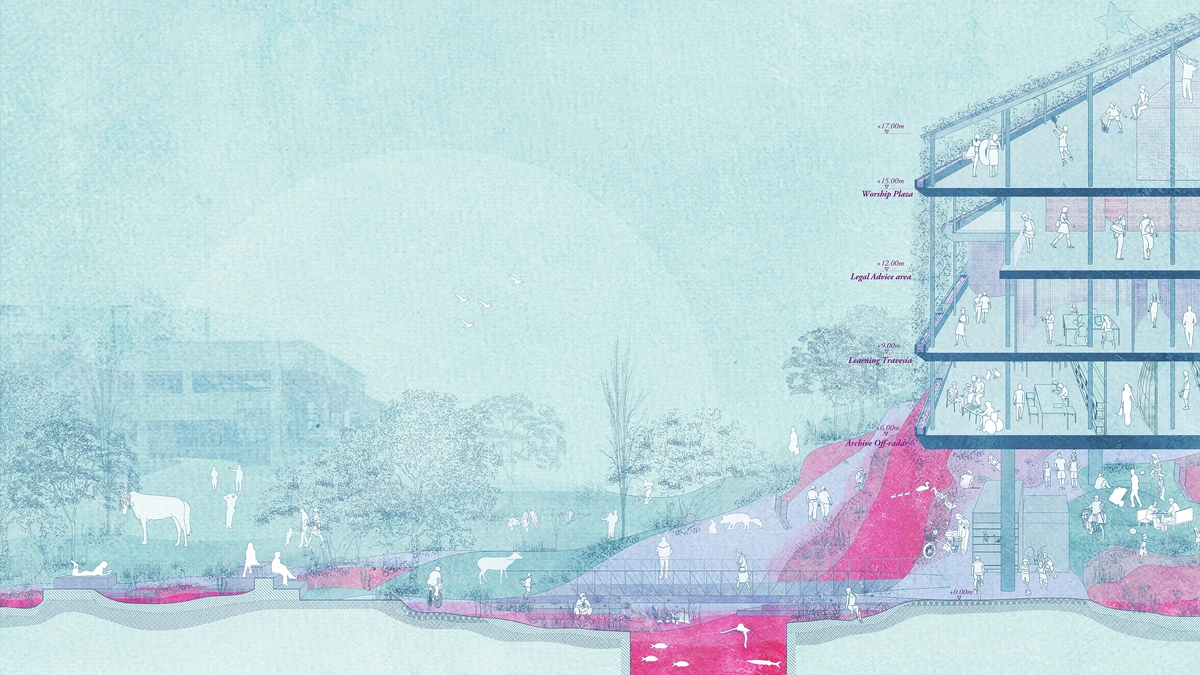
Waterever experienced. In ancient Rome, the “thermae” was the place where people would gather to socialize around water. Waterever revisits the Roman thermae becoming a playful and exciting scenery that aims to congregate the different realities that coexist in the Gries district. This new wetland landscape will filter the Mühlgang waters, keeping the waterway and its associated landscapes fresh and clean to welcome and support its own wildlife that will change with the seasons.
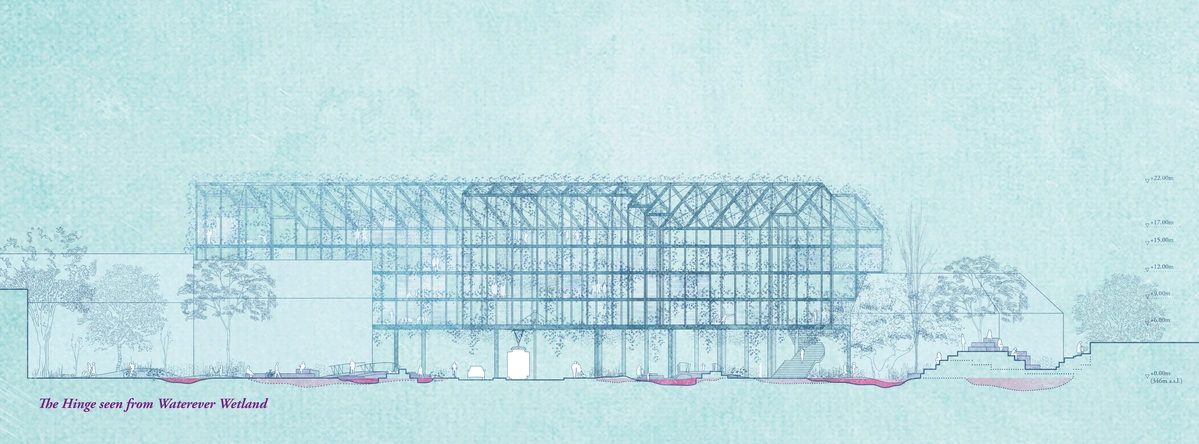
The Hinge seen from Waterever wetland. As Waterever approaches the main street—Karlauerstraße—its natural morphology is mitigated to give prominence to the Hinge: a permeable building with a green facade that extends the landscape upwards. The Hinge creates a unique Gateway to the once iconic now outdated CityPark—the city’s first ever shopping mall—connecting it with the proposed green and blue detour along the Mühlgang.
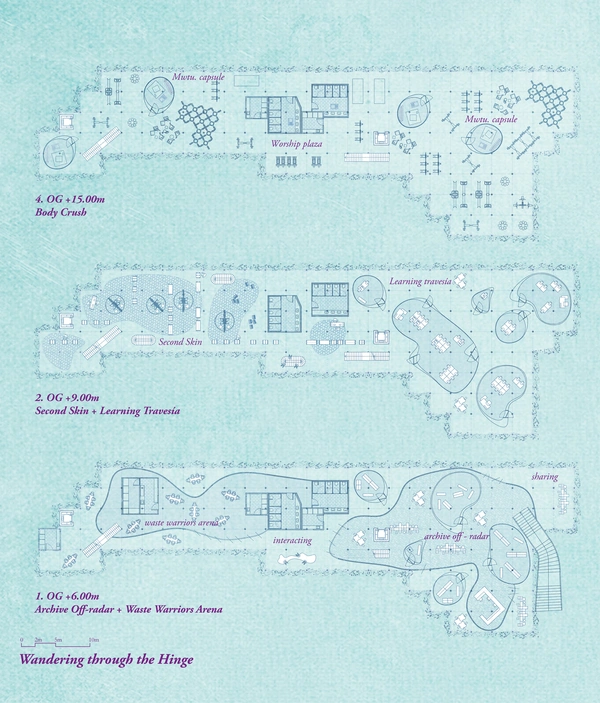
Wandering through the Hinge. The program fluctuates between natural and human realities. The wetland—in spite of being an artificial construction, as the existing canal already is—advocates for a natural regeneration through time and the re-thinking of the human being in its relationship with the natural environment. Meanwhile the Hinge enhances the exercise of body and mind from an inclusive perspective, giving minority groups a leading voice.
Mónica, Violeta and Raquel met at the Architecture School of Madrid (ETSAM) and have since kept exchanging ideas. Through design, they explore and learn other ways of becoming socially helpful, enhancing participation, freedom of use, and appropriation. Each of them has implemented projects and successfully participated in a variety of competitions within the architecture offices they have collaborated with (such as Tatiana Bilbao Estudio, Lacaton&Vassal, Héctor Fernández Elorza, Linatoro.Arch…). Their practice is enriched by other disciplines such as anthropology, gender studies, photography, ceramics, graphic design and fashion. After years wandering across the world, FREE MÜHLGANG gave them the chance to reconnect and materialize dreams, ideals, programs and concepts they together pursue. They are currently based in Madrid and Los Angeles.
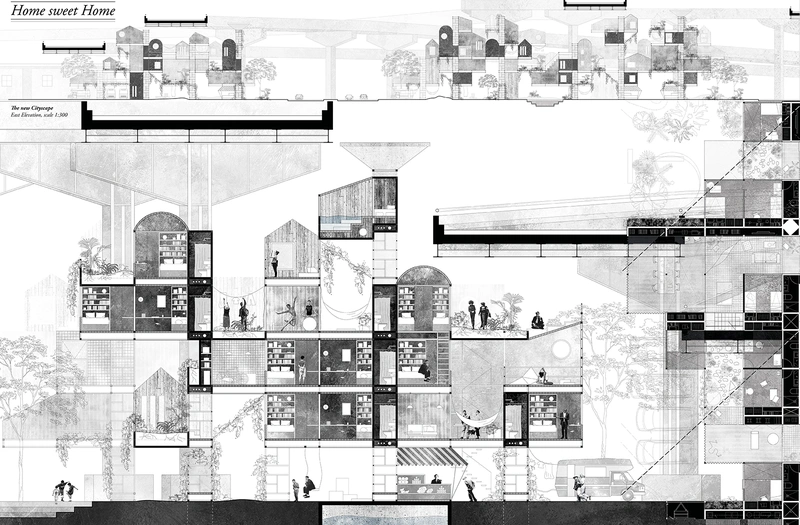
Home sweet Home. San Francisco Affordable Housing Challenge. Monica Lamela w/ Sofia Betancur
Official credits: Monica Lamela
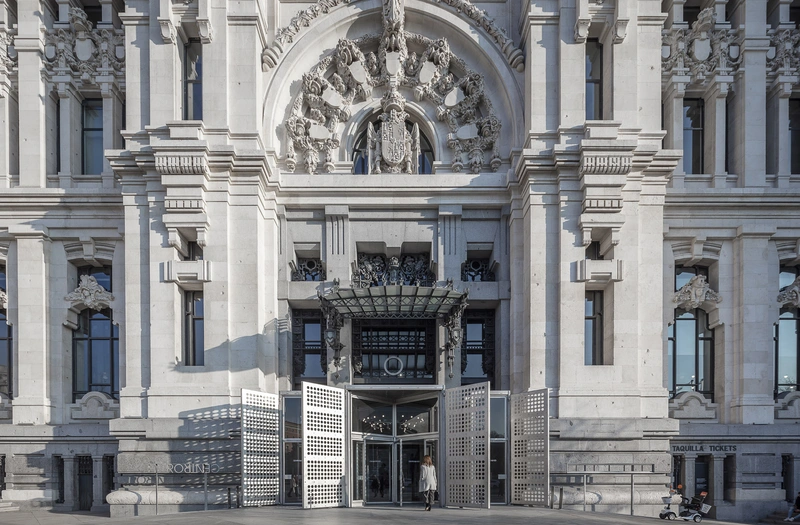
CentroCentro’s Hall. Violeta Ordóñez w/ Héctor Fernández Elorza
Official photo credits: Montse Zamorano
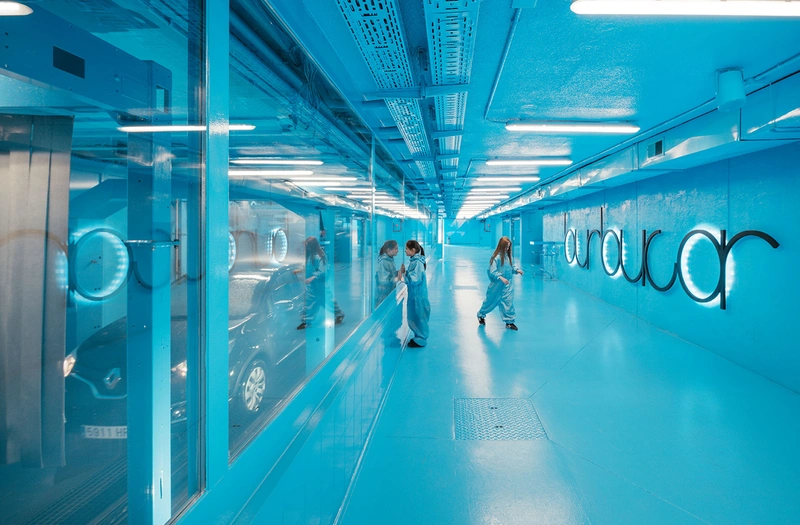
Behind the scenes: not only a carwash. Raquel Ruiz w/ Linatoro.Arch
Official photo credits: Imagen Subliminal
